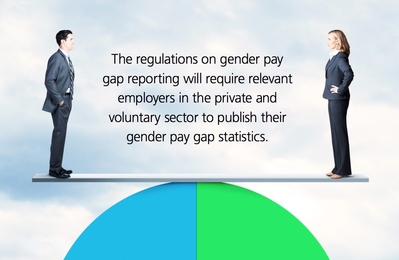 Weather in the U.K., renowned for being unreliable and often cool and damp, was extremely hot this summer, which just goes to show, there will always be something to surprise us and keep us on our toes.
Weather in the U.K., renowned for being unreliable and often cool and damp, was extremely hot this summer, which just goes to show, there will always be something to surprise us and keep us on our toes.
As we turn to the subject of pay and reporting, the European Union (EU) referendum also had the capacity to provide us with a surprise outcome.
Going into the pre-election Purdah, a period when no government activity can take place, we predicted that U.K. payroll professionals would play a fundamental role in implementing the raft of changes that would be delivered whatever the outcome, and in all likelihood to tight time scales.
Where Are the Consultations?
You may recall from a previous article that the U.K. Budget for 2016 delivered a bumper report that had the payroll and accountancy profession on tenterhooks awaiting a busy summer filled with consultations. Instead we appear to have a bit of a backlog that has formed while those at the head of the U.K. Government have a reshuffle and revisit their priorities for the coming months (and years).
Last time, we looked at the Apprenticeship Levy due to be introduced in April 2017. Let us look to another subject that is also due to make an appearance soon and also is set to affect larger employers—although this time size will be based on employee numbers, not paybill numbers.
Gender Pay Gap Reporting
The regulations on gender pay gap reporting, which are currently scheduled (allowing for slippage) to come into force from 1 October 2016, will require relevant employers in the private and voluntary sector to publish their gender pay gap statistics. With the first disclosure due in April 2018 (based on data collected on 30 April 2017), we have to ask how ready are employers and software providers to respond to this latest statutory requirement when there are so many unanswered questions and the technical guidance is not yet ready.
Early indications from a recent Chartered Institute of Payroll Professionals (CIPP) poll revealed that 40% of respondents who believe they would be affected by the legislation were unaware of what would actually be required. There is, therefore, a lot of work to do in a very short period of time and that is dependent on the delayed government response to the technical consultation on the draft regulations (another casualty of the EU referendum results).
What Do the Draft Regulations Tell Us?
- It affects the private and voluntary sector (the public sector will require separate legislation to be consulted separately)
- It will cover England, Scotland, and Wales
- It is for companies with a headcount of 250 or more relevant employees*
- Data is to be collected from April 2017
*A relevant employee is someone who ordinarily works in Great Britain and whose contract is governed by U.K. legislation.
What Data Will Be Published?
- Mean and median overall gender pay gap
- Mean gender bonus gap (for those receiving a bonus)
- Proportion of male and female employees that received a bonus
- Number of men and women working at different pay quartiles
Definition of Pay
To ensure comparability with national gender pay gap figures, the definition of pay that is used is from the Office of National Statistics (ONS). As such, “pay,” as defined by the draft legislation, includes “basic pay, paid leave, maternity pay, sick pay, area allowances, shift premium pay, bonus pay, and other pay (including car allowances paid through the payroll, on-call and standby allowances, clothing, and first aider or fire warden allowances). It does not include overtime pay, expenses, the value of salary sacrifice schemes, benefits in kind, redundancy pay, arrears of pay, and tax credits.”
By using the above pay definition, statutory paternity pay, statutory adoption pay, and shared parental pay appear to be excluded. Is this an oversight, a deliberate decision, or is there the assumption that statutory maternity pay means all child-related statutory pay—or is it simply an out-of-date definition?
Another point to note is that the definition excludes overtime pay. It has been argued that, as a minimum, compulsory overtime should be included in the definition. Excluding overtime creates the risk of distorting the statistics by reinforcing a current gender bias in the labour market since most overtime is worked by male manual workers.
 Hourly Pay Rate
Hourly Pay Rate
One of the requirements to generate average earnings figures unaffected by the number of hours worked means employers will need to calculate an hourly pay rate for each relevant employee. This is potentially more complex than it at first appears. The hourly pay rate could be calculated on contractual hours or actual hours worked.
Employees in some sectors or at senior levels may be expected to work many hours over and above the contractually stated amount without any extra remuneration, which would affect the average hourly rate, if taken into account. If distortions like this creep into the calculations, deliberately or otherwise, comparisons will be flawed.
Preparing the Data
Pay data, as defined in the draft legislation, could prove difficult to extract because it is not the same pay reportable on the payslip or on the Full Payment Submission (FPS), but only elements of it. We will expect this extraction facility to be built into our payroll software rather than having to resort to manual intervention, and for that we need the government to issue technical specifications for our software developers in time for 2017-18 upgrades.
The calculation of pay averages is based on a proposed snapshot date of 30 April. Weekly pay that includes this date will be captured, as will monthly and two weekly pays that include this date. However, bonus calculations are based on the previous 12 months of data so a bonus paid on a pay date after 30 April but in the same pay period cannot be included in the report.
Comments were raised throughout consultation that a date that was consistent with other deadlines or “snapshot” dates such as the end of the tax year would be more easily applied to this calculation, particularly as payroll software would hold 12 months’ bonus pay data within the year-to-date figures being reported on the final FPS of the tax year.
Bonus pay is defined in the draft regulations as including:
- Payments received and earned in relation to profit sharing, productivity, performance and other bonus or incentive pay, piecework, and commission
- Long term incentive plans or schemes (including those dependent on company and personal performance)
- The cash equivalent value of shares on the date of payment
Best Intentions
Equal pay legislation has been on the statute books for many years, yet the U.K.’s gender pay gap has been stubbornly slow to narrow. The pay gap currently stands at 19.2%.
Officials hope that by focusing their attention on this employers can be persuaded to review their recruitment practices and consider whether they are making best use of both genders in their hiring and retention practices.
The regulations are intended for employers with more than 250 employees. However, it may be that organisations with fewer than 250 employees also may find that they are required to report the same information in cases where they are part of a supply chain for a larger organisation.
As I write this piece, we are still awaiting publication of the government response to the consultation on the Equality Act 2010 (Gender Pay Gap Information) Regulations 2016, I would hope that by the time you read this, it will have been published, and that we are well on our way to seeing payroll software and employer guidance.
Regardless of what the future holds as a result of “Brexit,” the impact has already been to delay and squeeze already tight time scales and deadlines. For those of us working within the payroll function, this is valuable time that we can ill afford to lose. Business as usual, then.